
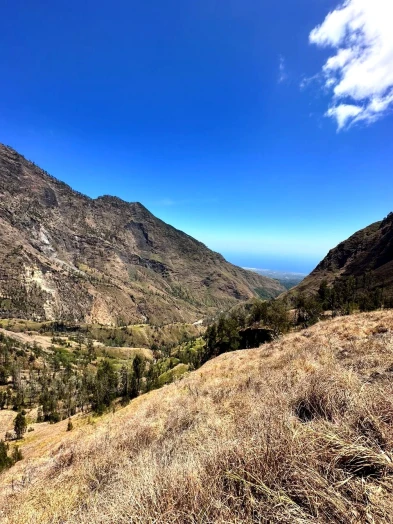
Everything you need to know about climbing Rinjani before embarking on the journey. Trekking for many is associated with a leisurely stroll through mountainous terrain with breaks for photographing landscapes. However, in our case, it involves ascending to an altitude of 3,726 meters. It's an event that requires prior preparation, assessing your fitness level, and evaluating the composition of the group with which you plan to climb.
When choosing a program and route, it's important to consider several factors: the season, the physical preparation of each group member, and suitable clothing for comfort and health. If you're trekking in the dry season, be prepared for strong winds carrying sand and dry sandy soil. It's advisable to bring a balaclava or something similar to protect your eyes and respiratory passages from the sand. Windbreakers and disposable items are also recommended.
Oh, and one of the most crucial components is having a good and knowledgeable guide who can coordinate all the details for a comfortable journey. These insights were gained after many mistakes, so this story serves as an interesting practical guide and a captivating narrative of climbing Mount Rinjani.
It's important to note that Rinjani is not just a volcano; it's a national park with a vast territory, its ecosystem featuring waterfalls, hot springs, and a lake. There are established and tested routes that involve visiting various places. Therefore, when choosing a route, consider not only the duration of the trek but also the overall physical fitness. They all start from the village of Sembalun, and the rest depends on numerous factors and the guide's expertise.
Changes in the route and breathtaking landscapes
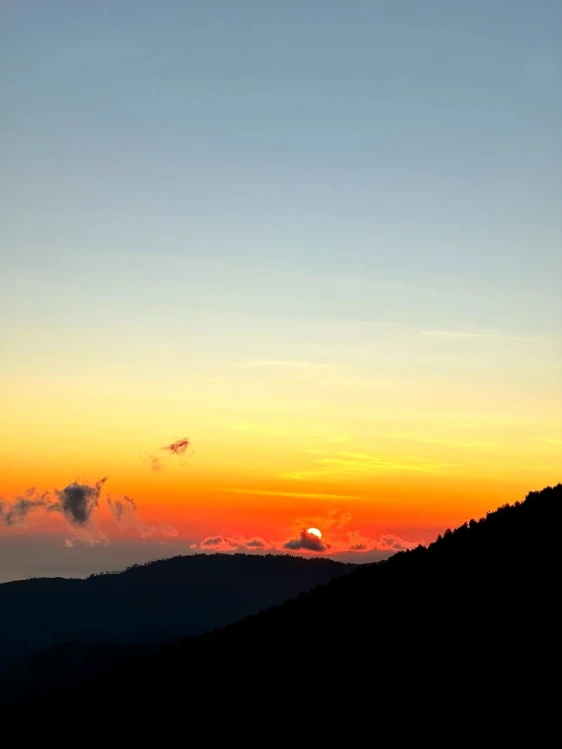

Initially, we chose the most ambitious option – a three-day route with an overnight stay at a campsite on the peaks. We started from the village of Sembalun. Our finish on the first day was at the first base camp at an altitude of 2600 meters, called "Crater Rim Sembulan," which we reached in 8 hours. It was the long-awaited dinner at the camp and a sunset with a view of the lake. A night under the starry sky in a tent is a unique pleasure. By the way, it gets quite cold at the top after sunset.
Trekking to an altitude of 2600 meters already exhausted us, especially considering that there was a six-year-old child in the group, whom a porter carried almost the entire way. According to the planned route, the group was supposed to make a morning ascent to the Rinjani summit - 3,726 meters, then descend to the hot springs at an altitude of 2,000 meters, and climb again to the second base camp for the night. After the first day, we realized that the initially chosen route was underestimated by us. Some members of the group couldn't recover their strength overnight, and the guides, weighing all the pros and cons, decided to change the original plan to one more suitable for our company. Instead of ascending another 1000 meters early in the morning, our next destination became the hot springs and the lake in the crater.
Meeting the sunrise, breathing in fresh air, and having a hearty breakfast, we headed to the springs on the way towards the gorge. The road required a great deal of attention, as it was partly composed of sand and stones, with some places even requiring climbing. There were quite extreme moments with narrow paths over the abyss and a rope for safety. However, the route itself passes through an incredibly picturesque mountain landscape. The entire journey was accompanied by such breathtaking views that no one in the group regretted taking this route. Each time, there was a desire to stop and capture this incredible beauty. It was one of the most impressive parts of our trek.
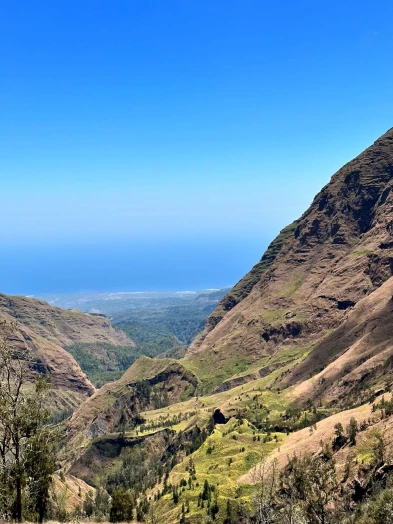
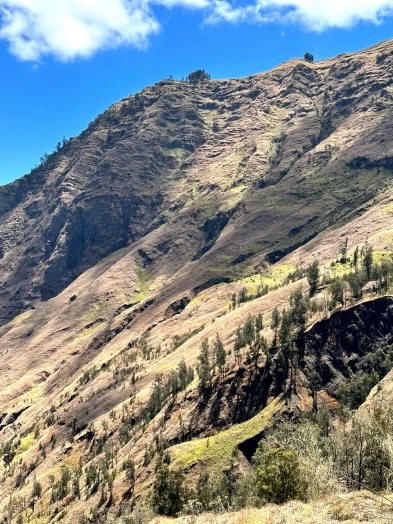
Note: If you still decide to continue climbing to the summit, plan your time and energy for the challenging descent back to the lake.
The next pleasant surprise awaited us after a three-hour descent to the lake. Lunch and hot springs are the best way to spend time after a long journey and completely relax the body. The water temperature in the baths is around +34°C.
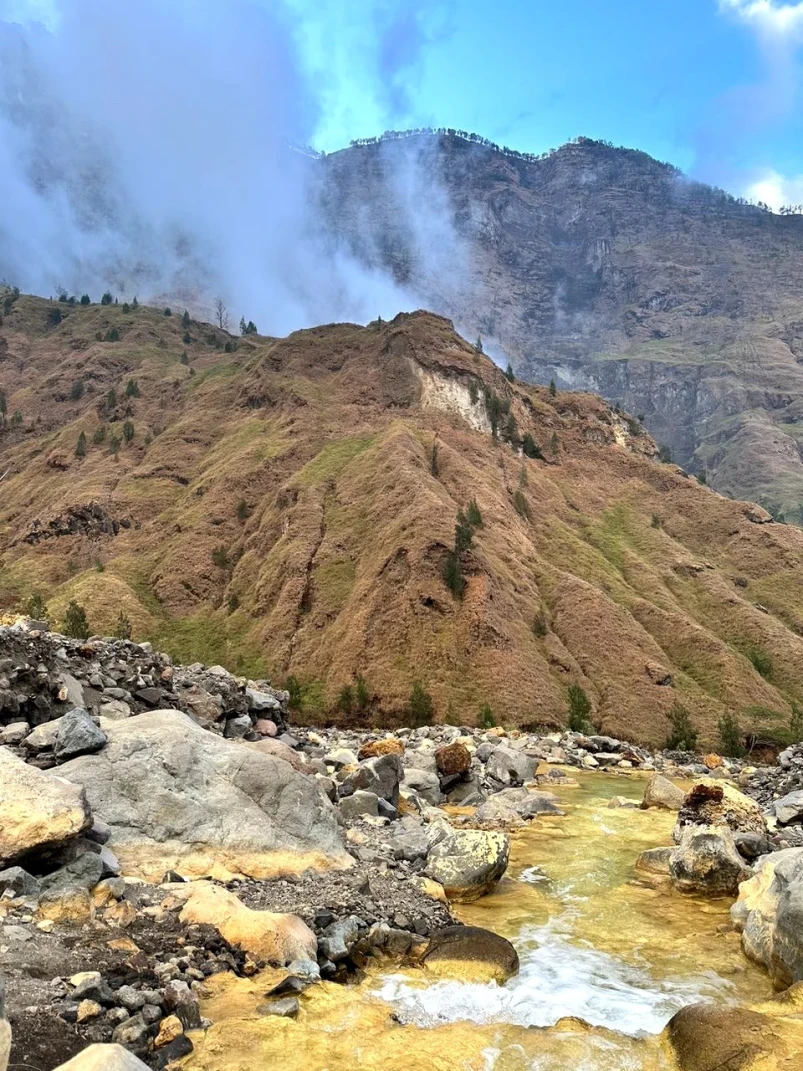
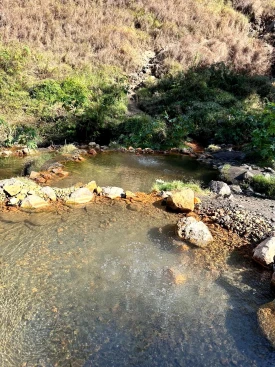
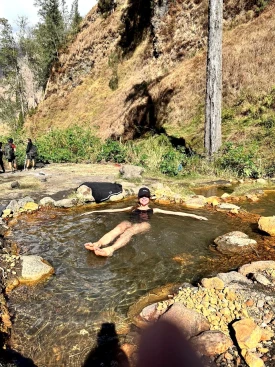
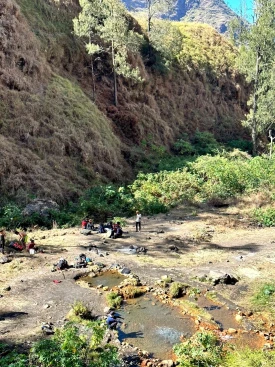
Next, our route involved ascending to the second peak along an almost sheer cliff. We decided that it was unsafe for us, and the guides suggested an alternative - the Torean route, which also passes through a gorge, hills, and waterfalls.

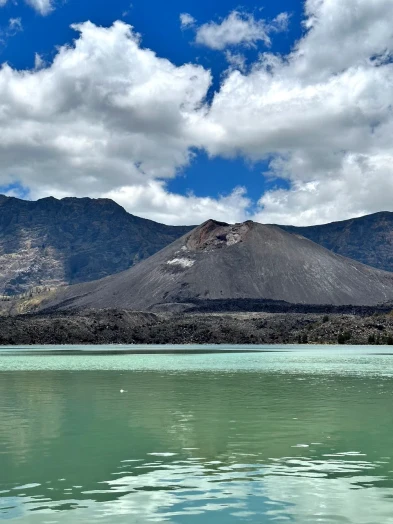
On this path, constant descents and ascents awaited us throughout the gorge. As night approached, and not wanting to deviate from our planned schedule, we set up camp at the nearest point we could reach before darkness fell. After dinner, everyone dispersed to their tents for the final night under the starry sky.
In the morning, breakfast awaited us, and a whole day of travel to the foothills. We stuck to the planned schedule and completed the route in the village of Torean after 7 hours. From there, a transfer picked us up and took us by ferry to the Lembar port.
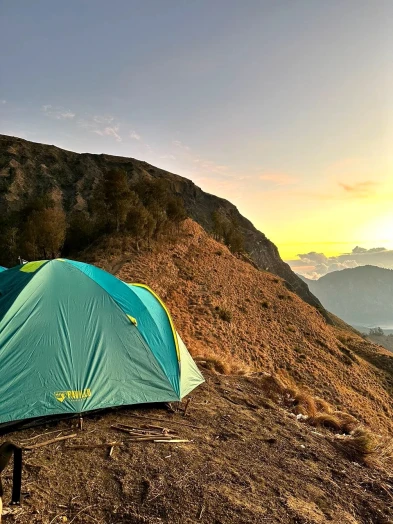

Now that strength is restored, and the body has rested, we can evaluate the entire journey. It can confidently be said that this trip is undoubtedly worth it! Yes, it's a more time-consuming and energy-consuming ascent, requiring at least basic preparation, so it may not be as popular as Batur or Agung, perhaps. But for trekking enthusiasts or advanced climbers, it's a treasure trove of routes and unforgettable mountain landscape views! Moreover, Rinjani is not only a volcano with several peaks but also a UNESCO-protected National Park. Another recommendation: if you are not confident in your abilities, it's better to take an individual tour and change the route and pace depending on your preparation. In a group tour, you'll have to go at a unified pace, with one guide assigned to 3-4 people. Therefore, it won't be possible to split up and take a different route. We took a tour from mybalitrips.com - here's the link.
Pros and cons to consider if you decide to go hiking and make the ascent. Among the pros are route flexibility, the option to hire a porter to relieve yourself of extra weight, and, of course, the mountain landscapes. As for the cons, which are noticeable and within human control - the lack of biotoilets along the way and the abundance of garbage in stationary camps. Weather and seasonality are factors to take into account. During the dry season, there is strong wind and dust. With the right clothing and equipment, you can minimize discomfort, so prepare for the journey in advance. It will be memorable for a long time!
Successful ascents and good weather!
You can add one right now!